Salt cleaning hacks – who knew something so simple could be so powerful around the house? I’m always on the lookout for easy, affordable ways to keep my home sparkling, and I’ve discovered that good old salt is a surprisingly versatile cleaning agent. From scrubbing stubborn stains to freshening up tired appliances, salt has been a go-to cleaning solution for generations. Think about it: before fancy detergents and specialized cleaners, our grandmothers relied on natural ingredients like salt to keep their homes clean and healthy.
For centuries, salt has been valued not only for its culinary uses but also for its remarkable cleaning properties. In ancient times, it was even used as a form of currency! Today, we can harness that same power to tackle everyday cleaning challenges. Are you tired of spending a fortune on expensive cleaning products filled with harsh chemicals? Do you want to find eco-friendly alternatives that are safe for your family and the environment? Then you’re in the right place! This article is packed with simple, effective salt cleaning hacks that will save you time, money, and effort. Get ready to discover the magic of salt and transform your cleaning routine!
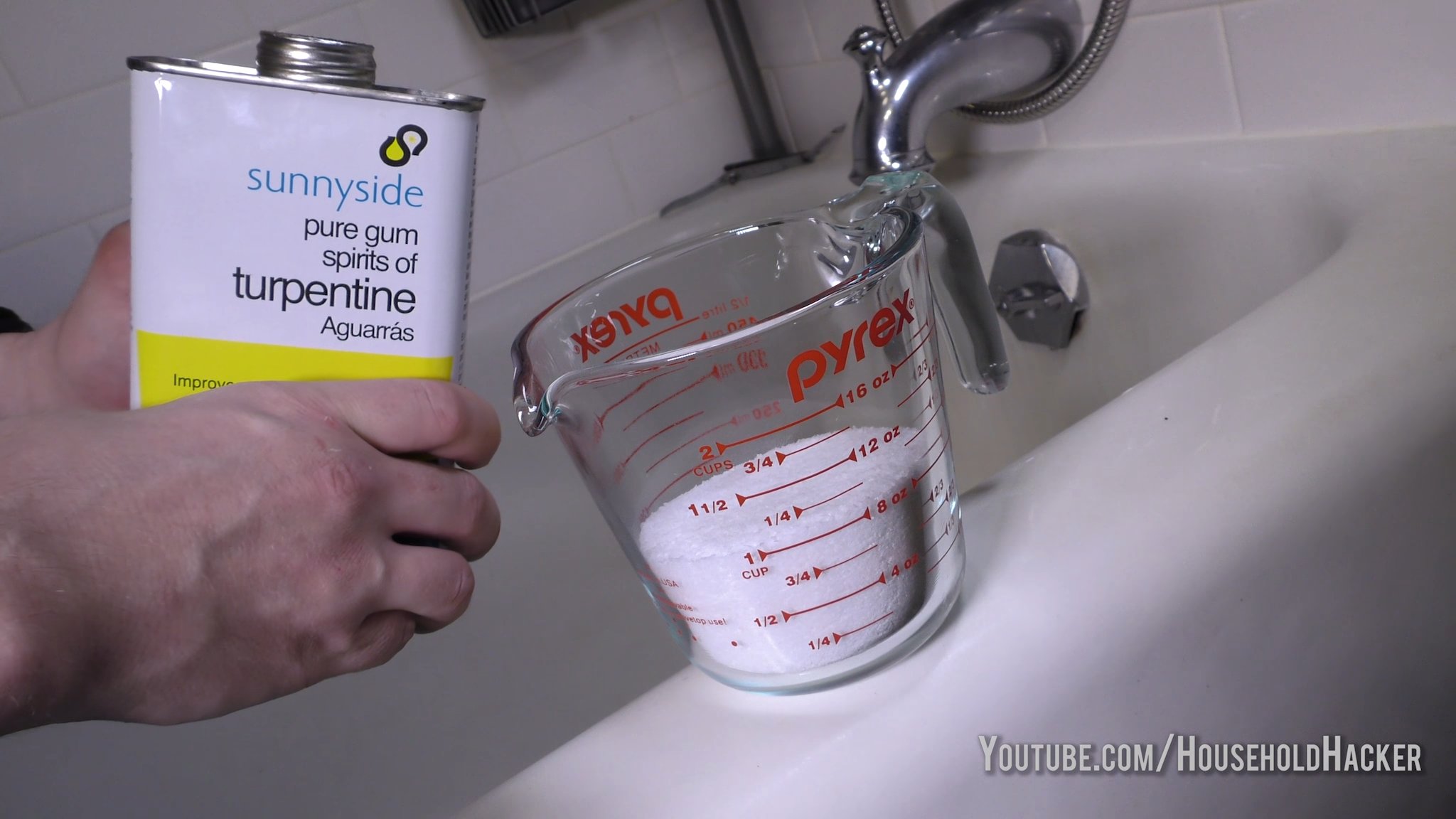
DIY Salt Cleaning Hacks: Unleash the Power of Sodium Chloride!
Hey there, fellow DIY enthusiasts! I’m always on the lookout for simple, effective, and budget-friendly cleaning solutions. And guess what? I’ve discovered the amazing cleaning power of something you probably already have in your pantry: salt! Yes, plain old table salt. It’s not just for seasoning your food; it’s a surprisingly versatile cleaning agent. I’m going to share some of my favorite salt cleaning hacks that will save you money and keep your home sparkling.
General Salt Cleaning Tips
Before we dive into specific hacks, here are a few general tips to keep in mind when using salt for cleaning:
* Choose the Right Salt: For most cleaning tasks, regular table salt works just fine. However, for abrasive cleaning, like scrubbing a cast iron skillet, coarse salt (like sea salt or kosher salt) is more effective. Avoid using iodized salt on silver, as it can cause tarnishing.
* Test First: As with any cleaning product, it’s always a good idea to test salt on an inconspicuous area first, especially on delicate surfaces.
* Rinse Thoroughly: After cleaning with salt, make sure to rinse the surface thoroughly with water to remove any residue.
* Combine with Other Ingredients: Salt works wonders on its own, but it can be even more effective when combined with other natural cleaning agents like vinegar, lemon juice, or baking soda.
Cleaning Cast Iron Skillets with Salt
Cast iron skillets are kitchen workhorses, but cleaning them can be a pain. Forget harsh soaps and scouring pads! Salt is your new best friend.
1. Let the Skillet Cool Slightly: After cooking, let the skillet cool down a bit, but don’t let it sit overnight. You want it to be warm enough to loosen any stuck-on food.
2. Add Coarse Salt: Pour a generous amount of coarse salt (about 1/2 cup) into the skillet.
3. Scrub with a Cloth or Sponge: Using a clean, dry cloth or sponge, scrub the skillet vigorously with the salt. The salt will act as a gentle abrasive, removing food particles without damaging the seasoning.
4. Rinse with Hot Water: Rinse the skillet with hot water, making sure to remove all traces of salt.
5. Dry Thoroughly: Immediately dry the skillet with a clean towel.
6. Season (Optional): To maintain the seasoning, you can heat the skillet on the stovetop over medium heat until it’s completely dry. Then, add a teaspoon of oil (like vegetable or canola oil) and rub it into the skillet with a clean cloth. Heat for a few more minutes until the oil starts to smoke slightly, then remove from heat and let it cool completely.
Cleaning a Stained Coffee Mug
Those stubborn coffee stains in your favorite mug? Salt to the rescue!
1. Wet the Mug: Dampen the inside of the stained mug with water.
2. Add Salt: Sprinkle a generous amount of salt (about 1-2 tablespoons) into the mug.
3. Scrub: Use a damp sponge or cloth to scrub the inside of the mug with the salt. The salt will act as a gentle abrasive, lifting the stains.
4. Rinse: Rinse the mug thoroughly with water.
5. Repeat if Necessary: If the stains are particularly stubborn, repeat the process.
Cleaning a Scorched Pot or Pan
Burnt food stuck to the bottom of your pot or pan? Don’t despair! Salt can help loosen those stubborn bits.
1. Fill with Water: Fill the scorched pot or pan with enough water to cover the burnt food.
2. Add Salt: Add a generous amount of salt (about 1/4 cup per quart of water) to the water.
3. Boil: Bring the water to a boil and let it simmer for 15-20 minutes.
4. Let Cool: Remove the pot or pan from the heat and let it cool completely.
5. Scrub: Use a sponge or scraper to scrub away the loosened burnt food.
6. Wash as Usual: Wash the pot or pan as usual with soap and water.
Cleaning a Greasy Oven
Oven cleaning is nobody’s favorite chore, but salt can make it a little easier.
1. Sprinkle Salt on Fresh Spills: If you have a fresh spill in your oven, immediately sprinkle a generous amount of salt on it. The salt will absorb the grease and prevent it from baking onto the oven surface.
2. Let Cool: Let the oven cool completely.
3. Scrub: Use a damp sponge or cloth to scrub away the salt and grease.
4. For Baked-On Grease: For baked-on grease, make a paste of salt and water. Apply the paste to the greasy areas and let it sit for a few hours or overnight. Then, scrub with a sponge or cloth.
5. Wipe Clean: Wipe the oven clean with a damp cloth.
Cleaning a Drain
A clogged drain can be a real headache. Salt can help break down grease and debris.
1. Pour Salt Down the Drain: Pour about 1/2 cup of salt down the drain.
2. Follow with Hot Water: Pour a kettle of boiling water down the drain.
3. Let Sit: Let the mixture sit for several hours or overnight.
4. Flush with Hot Water: Flush the drain with hot water for several minutes.
5. Repeat if Necessary: If the drain is still clogged, repeat the process.
Cleaning Brass, Copper, and Silver
Salt can help remove tarnish from brass, copper, and silver. However, remember to avoid using iodized salt on silver.
1. Make a Paste: Mix salt with vinegar or lemon juice to form a paste.
2. Apply to the Metal: Apply the paste to the tarnished metal.
3. Let Sit: Let the paste sit for 15-30 minutes.
4. Scrub Gently: Scrub the metal gently with a soft cloth or sponge.
5. Rinse Thoroughly: Rinse the metal thoroughly with water.
6. Dry Completely: Dry the metal completely with a clean towel.
Cleaning Windows and Mirrors
Want streak-free windows and mirrors? Salt can help!
1. Mix Salt with Water: Mix 1 tablespoon of salt with 1 quart of warm water.
2. Pour into a Spray Bottle: Pour the mixture into a spray bottle.
3. Spray and Wipe: Spray the windows or mirrors with the solution and wipe clean with a clean cloth or paper towel.
Cleaning Cutting Boards
Cutting boards can harbor bacteria and odors. Salt can help sanitize and deodorize them.
1. Sprinkle Salt on the Cutting Board: Sprinkle a generous amount of salt on the cutting board.
2. Rub with Lemon: Cut a lemon in half and rub the cut side over the salt.
3. Let Sit: Let the mixture sit for 5-10 minutes.
4. Rinse: Rinse the cutting board thoroughly with water.
Hey there, fellow DIY enthusiasts! I’m always on the lookout for simple, effective, and budget-friendly cleaning solutions. And guess what? I’ve discovered the amazing cleaning power of something you probably already have in your pantry: salt! Yes, plain old table salt. It’s not just for seasoning your food; it’s a surprisingly versatile cleaning agent. I’m going to share some of my favorite salt cleaning hacks that will save you money and keep your home sparkling.
General Salt Cleaning Tips
Before we dive into specific hacks, here are a few general tips to keep in mind when using salt for cleaning:
* Choose the Right Salt: For most cleaning tasks, regular table salt works just fine. However, for abrasive cleaning, like scrubbing a cast iron skillet, coarse salt (like sea salt or kosher salt) is more effective. Avoid using iodized salt on silver, as it can cause tarnishing.
* Test First: As with any cleaning product, it’s always a good idea to test salt on an inconspicuous area first, especially on delicate surfaces.
* Rinse Thoroughly: After cleaning with salt, make sure to rinse the surface thoroughly with water to remove any residue.
* Combine with Other Ingredients: Salt works wonders on its own, but it can be even more effective when combined with other natural cleaning agents like vinegar, lemon juice, or baking soda.
Cleaning Cast Iron Skillets with Salt
Cast iron skillets are kitchen workhorses, but cleaning them can be a pain. Forget harsh soaps and scouring pads! Salt is your new best friend.
1. Let the Skillet Cool Slightly: After cooking, let the skillet cool down a bit, but don’t let it sit overnight. You want it to be warm enough to loosen any stuck-on food.
2. Add Coarse Salt: Pour a generous amount of coarse salt (about 1/2 cup) into the skillet.
3. Scrub with a Cloth or Sponge: Using a clean, dry cloth or sponge, scrub the skillet vigorously with the salt. The salt will act as a gentle abrasive, removing food particles without damaging the seasoning.
4. Rinse with Hot Water: Rinse the skillet with hot water, making sure to remove all traces of salt.
5. Dry Thoroughly: Immediately dry the skillet with a clean towel.
6. Season (Optional): To maintain the seasoning, you can heat the skillet on the stovetop over medium heat until it’s completely dry. Then, add a teaspoon of oil (like vegetable or canola oil) and rub it into the skillet with a clean cloth. Heat for a few more minutes until the oil starts to smoke slightly, then remove from heat and let it cool completely.
Cleaning a Stained Coffee Mug
Those stubborn coffee stains in your favorite mug? Salt to the rescue!
1. Wet the Mug: Dampen the inside of the stained mug with water.
2. Add Salt: Sprinkle a generous amount of salt (about 1-2 tablespoons) into the mug.
3. Scrub: Use a damp sponge or cloth to scrub the inside of the mug with the salt. The salt will act as a gentle abrasive, lifting the stains.
4. Rinse: Rinse the mug thoroughly with water.
5. Repeat if Necessary: If the stains are particularly stubborn, repeat the process.
Cleaning a Scorched Pot or Pan
Burnt food stuck to the bottom of your pot or pan? Don’t despair! Salt can help loosen those stubborn bits.
1. Fill with Water: Fill the scorched pot or pan with enough water to cover the burnt food.
2. Add Salt: Add a generous amount of salt (about 1/4 cup per quart of water) to the water.
3. Boil: Bring the water to a boil and let it simmer for 15-20 minutes.
4. Let Cool: Remove the pot or pan from the heat and let it cool completely.
5. Scrub: Use a sponge or scraper to scrub away the loosened burnt food.
6. Wash as Usual: Wash the pot or pan as usual with soap and water.
Cleaning a Greasy Oven
Oven cleaning is nobody’s favorite chore, but salt can make it a little easier.
1. Sprinkle Salt on Fresh Spills: If you have a fresh spill in your oven, immediately sprinkle a generous amount of salt on it. The salt will absorb the grease and prevent it from baking onto the oven surface.
2. Let Cool: Let the oven cool completely.
3. Scrub: Use a damp sponge or cloth to scrub away the salt and grease.
4. For Baked-On Grease: For baked-on grease, make a paste of salt and water. Apply the paste to the greasy areas and let it sit for a few hours or overnight. Then, scrub with a sponge or cloth.
5. Wipe Clean: Wipe the oven clean with a damp cloth.
Cleaning a Drain
A clogged drain can be a real headache. Salt can help break down grease and debris.
1. Pour Salt Down the Drain: Pour about 1/2 cup of salt down the drain.
2. Follow with Hot Water: Pour a kettle of boiling water down the drain.
3. Let Sit: Let the mixture sit for several hours or overnight.
4. Flush with Hot Water: Flush the drain with hot water for several minutes.
5. Repeat if Necessary: If the drain is still clogged, repeat the process.
Cleaning Brass, Copper, and Silver
Salt can help remove tarnish from brass, copper, and silver. However, remember to avoid using iodized salt on silver.
1. Make a Paste: Mix salt with vinegar or lemon juice to form a paste.
2. Apply to the Metal: Apply the paste to the tarnished metal.
3. Let Sit: Let the paste sit for 15-30 minutes.
4. Scrub Gently: Scrub the metal gently with a soft cloth or sponge.
5. Rinse Thoroughly: Rinse the metal thoroughly with water.
6. Dry Completely: Dry the metal completely with a clean towel.
Cleaning Windows and Mirrors
Want streak-free windows and mirrors? Salt can help!
1. Mix Salt with Water: Mix 1 tablespoon of salt with 1 quart of warm water.
2. Pour into a Spray Bottle: Pour the mixture into a spray bottle.
3. Spray and Wipe: Spray the windows or mirrors with the solution and wipe clean with a clean cloth or paper towel.
Cleaning Cutting Boards
Cutting boards can harbor bacteria and odors. Salt can help sanitize and deodorize them.
1. Sprinkle Salt on the Cutting Board: Sprinkle a generous amount of salt on the cutting board.
2. Rub with Lemon: Cut a lemon in half and rub the cut side over the salt.
3. Let Sit: Let the mixture sit for 5-10 minutes.
4. Rinse: Rinse the cutting board thoroughly with water.
Cleaning Sponges
Sponges can get pretty gross. Salt can help clean and deodorize them.
1. Dissolve Salt in Water: Dissolve 1/4 cup of salt in 1 quart of warm water.
2. Soak the Sponge: Soak the sponge in the salt water for several hours or overnight.
3. Rinse: Rinse the sponge thoroughly with water.
Removing Water Rings from Wood Furniture
Those pesky water rings on your wood furniture? Salt and oil to the rescue!
1. Make a Paste: Mix salt with a small amount of oil (like vegetable oil or olive oil) to form a paste.
2. Apply to the Ring: Gently apply the paste to the water ring.
3. Rub Gently: Rub the paste gently in a circular motion with a soft cloth.
4. Wipe Clean: Wipe the area clean with a damp cloth.
5. Polish: Polish the area with a furniture polish.
Cleaning Iron
Irons can get a build-up of starch and residue. Salt can help clean the soleplate.
1. Sprinkle Salt on a Cloth: Sprinkle a generous amount of salt on a clean, dry cotton cloth or ironing board cover.
2. Heat the Iron: Heat the iron to a medium setting (no steam).
3. Iron the Salt: Iron the salt-covered cloth as if you were ironing clothes. The salt will help remove the residue from the soleplate.
4. Wipe Clean: Once the iron has cooled, wipe the soleplate clean with a damp
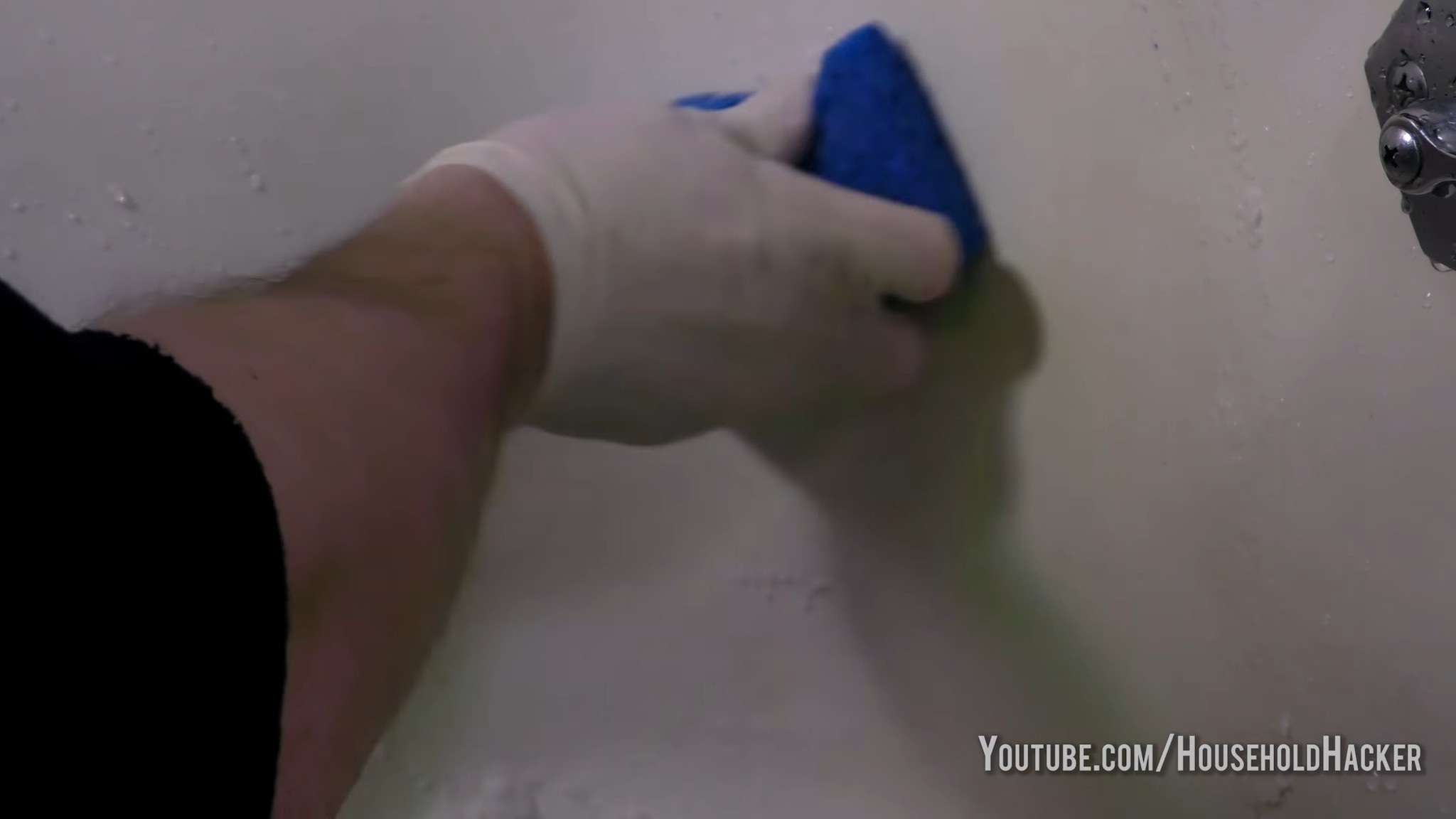
Conclusion
So, there you have it! This simple yet incredibly effective salt cleaning hack is a game-changer for anyone looking to simplify their cleaning routine and achieve sparkling results without harsh chemicals. We’ve explored how the abrasive nature of salt, combined with its natural disinfecting properties, makes it a powerful ally in tackling everything from stubborn stovetop stains to grimy grout.
Why is this a must-try? Because it’s economical, eco-friendly, and surprisingly versatile. You likely already have salt in your pantry, eliminating the need for expensive specialty cleaners. Plus, you’re reducing your exposure to potentially harmful chemicals, making it a safer option for your family and the environment. It’s a win-win!
But the beauty of this salt cleaning hack lies in its adaptability. Feel free to experiment with different types of salt. Coarse sea salt can provide extra scrubbing power for tough stains, while finer table salt is gentler on delicate surfaces. You can also enhance the cleaning power by adding other natural ingredients. A squeeze of lemon juice can boost its stain-fighting abilities, while a few drops of essential oil can leave a refreshing scent. For example, try mixing salt with lemon juice to create a paste for cleaning brass or copper items. Or, combine salt with baking soda and a little water to form a powerful grout cleaner.
Don’t be afraid to get creative and tailor the salt cleaning hack to your specific needs and preferences. Remember to always test a small, inconspicuous area first to ensure the salt doesn’t scratch or damage the surface.
We are confident that once you experience the cleaning prowess of this simple salt cleaning hack, you’ll be hooked. It’s a cost-effective, environmentally conscious, and surprisingly effective way to keep your home sparkling clean.
We highly encourage you to give this DIY cleaning trick a try. We’re eager to hear about your experiences! Share your before-and-after photos and your favorite salt cleaning recipes in the comments below. Let’s build a community of eco-conscious cleaners who are passionate about finding simple, effective solutions for a sparkling home. What worked best for you? Did you discover any new uses for salt in your cleaning routine? We want to know! Your insights could help others discover the magic of salt cleaning.
Let’s ditch the harsh chemicals and embrace the power of nature. Try this salt cleaning hack today and see the difference for yourself! You’ll be amazed at how such a simple ingredient can deliver such impressive results.
FAQ
What types of salt can I use for cleaning?
You can use various types of salt for cleaning, each offering slightly different benefits. Table salt is the most common and readily available option, suitable for general cleaning tasks. Coarse sea salt provides more abrasive power, making it ideal for scrubbing tough stains and grime. Epsom salt, while technically a mineral compound, can also be used for cleaning, particularly for removing soap scum and mineral deposits. Kosher salt is another good option, similar to table salt but without additives like iodine. Experiment with different types of salt to see which works best for your specific cleaning needs. Remember to always test on an inconspicuous area first, especially when using coarse salt on delicate surfaces.
Is salt safe to use on all surfaces?
While salt is generally safe for many surfaces, it’s essential to exercise caution and test it on an inconspicuous area before applying it to the entire surface. Avoid using coarse salt on delicate surfaces like polished wood, painted surfaces, or certain types of plastic, as it can cause scratches. Salt can be safely used on stainless steel, ceramic, porcelain, glass, and most types of tile. However, always check the manufacturer’s recommendations for specific cleaning instructions for your surfaces. When in doubt, opt for a finer salt and use a gentle touch.
Can I mix salt with other cleaning agents?
Yes, you can enhance the cleaning power of salt by combining it with other natural cleaning agents. Lemon juice is a popular addition, as its acidity helps to dissolve stains and disinfect surfaces. Baking soda is another excellent complement, providing extra scrubbing power and deodorizing properties. Vinegar can also be used in combination with salt, but be cautious when mixing it with other cleaning agents, as some combinations can produce harmful fumes. Essential oils can be added for fragrance and additional cleaning benefits. For example, tea tree oil has antibacterial properties, while lavender oil has a calming scent. Always research the compatibility of different cleaning agents before mixing them.
How do I remove stubborn stains with salt?
For stubborn stains, create a paste by mixing salt with a small amount of water or lemon juice. Apply the paste to the stain and let it sit for several minutes to allow the salt to penetrate and loosen the grime. Then, scrub gently with a sponge or cloth. For particularly tough stains, you can use a toothbrush to scrub the area more effectively. Rinse thoroughly with water and dry with a clean cloth. Repeat the process if necessary. For burnt-on food on pots and pans, try filling the pot with water and adding a generous amount of salt. Bring the mixture to a boil and let it simmer for a few minutes. The salt will help to loosen the burnt-on food, making it easier to scrub away.
How can I use salt to clean my kitchen sink?
Salt is an excellent natural cleaner for kitchen sinks. To clean your sink with salt, simply sprinkle a generous amount of salt into the sink and scrub with a damp sponge or cloth. For extra cleaning power, you can add a squeeze of lemon juice or a sprinkle of baking soda. Pay particular attention to areas with stubborn stains or grime. Rinse thoroughly with water and dry with a clean cloth. Salt can help to remove food particles, grease, and water spots, leaving your sink sparkling clean. You can also use salt to unclog a slow-draining sink. Pour a cup of salt down the drain, followed by a pot of boiling water. The salt will help to break down grease and debris, clearing the clog.
How do I store my homemade salt cleaning solutions?
Store your homemade salt cleaning solutions in airtight containers in a cool, dark place. Label the containers clearly with the ingredients and date of preparation. Most salt cleaning solutions will last for several weeks or even months if stored properly. However, it’s always best to use them within a reasonable timeframe to ensure their effectiveness. If you notice any changes in color, odor, or consistency, discard the solution. Avoid storing salt cleaning solutions in metal containers, as the salt can react with the metal and cause corrosion. Glass or plastic containers are the best options.

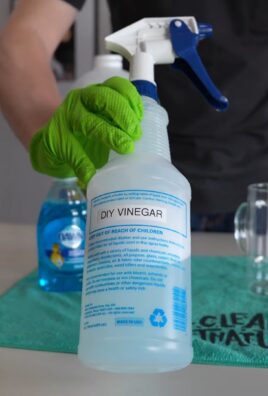
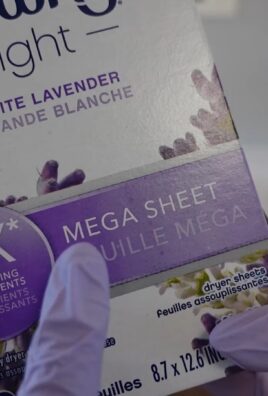
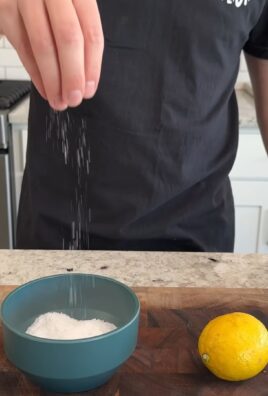
Leave a Comment